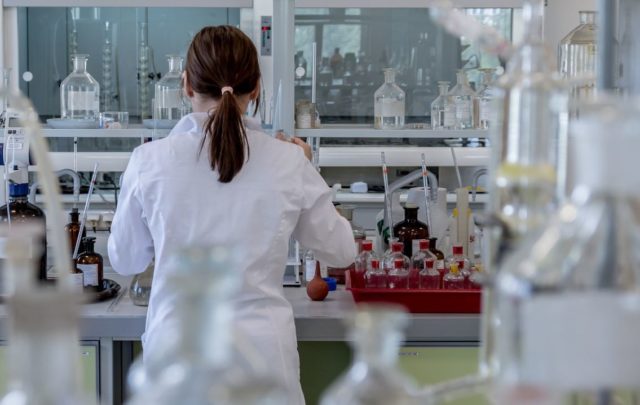Vilon, a synthetic dipeptide composed of lysine and glutamic acid, has garnered attention in scientific research due to its potential bioregulatory properties.
This article delves into the structural characteristics of Vilon, its hypothesized mechanisms of action, and its prospective implications across various research domains, including immunology, cellular aging oncology, and regenerative science.
While the exact pathways through which Vilon exerts its impact remain under investigation, emerging studies suggest that it may play a role in modulating gene expression, supporting immune function, and promoting tissue regeneration. Understanding these interactions may provide valuable insights into how short peptides impact complex biological systems.
Introduction
Peptides, short chains of amino acids, serve as fundamental components in numerous biological processes. Vilon (Lys-Glu) has emerged as a molecule of interest due to its simplicity and potential wide-ranging impacts on cellular functions.
Initially synthesized based on the analysis of thymus-derived preparations, Vilon is posited to act as a bioregulator, impacting various physiological processes. This article aims to explore the potential implications of Vilon in scientific research, focusing on its structural properties, proposed mechanisms of action, and possible roles in different biological contexts.
Structural Properties of Vilon
Vilon is a dipeptide consisting of lysine and glutamic acid, two amino acids integral to protein structure and function. Lysine, a positively charged amino acid, may facilitate interactions with negatively charged cellular components, such as nucleic acids and certain proteins.
Glutamic acid, bearing a negative charge, may contribute to the peptide’s solubility and interaction dynamics. This simple yet specific composition suggests that Vilon might engage in selective interactions within the cellular environment, potentially impacting various biochemical pathways. Studies suggest its small molecular size may allow it to traverse biological membranes relatively easily, further supporting its potential biological impact.
Hypothesized Mechanisms of Action
- Gene Expression Research
It has been hypothesized that Vilon may impact gene expression by interacting with chromatin structures, thereby affecting the transcriptional activity of specific genes.
Research indicates that short peptides like Vilon may regulate gene expression and stimulate thymocyte activation, suggesting a role in modulating immune responses. These interactions occur through epigenetic modifications or direct binding to nuclear receptors, altering transcriptional dynamics in ways that remain fully understood.
- Immune System Research
Vilon’s potential impact on the immune system has been a subject of interest. Investigations purport that Vilon might stimulate the proliferative activity of thymocytes, essential cells within the thymus involved in immune responses.
This stimulation may lead to better-supported immune surveillance and resilience against external threats. The mechanism through which Vilon is believed to interact with immune cells remains speculative, but it may impact cytokine production, antigen presentation, or T-cell differentiation pathways.
- Tissue and Cellular Research
Studies suggest that Vilon may promote tissue regeneration by impacting cellular proliferation.
For instance, research indicates that Vilon might support the multiplication potential of stem cells in the intestinal epithelium, particularly within the duodenal mucosa, indicating a role in supporting the regenerative processes of the gastrointestinal tract. This property has implications for wound healing, tissue engineering, and other regenerative science implications.
Potential Research Implications
- Cellular Aging and Longevity Research
The cellular aging process is associated with declining cellular function and regenerative potential. Vilon has been explored for its potential to mitigate some of these changes.
Research indicates that Vilon might support enzyme activity in the gastrointestinal tract of older research models, leading to increased glucose accumulation and allowing the subjects to maintain nutrient extraction over time, with a presumed positive impact on longevity.
Researchers examining its implications in cellular aging-related studies are also interested in its potential role in telomere stabilization and mitochondrial function.
- Oncology Research
The potential role of Vilon in oncology research has been explored, particularly concerning tumor development.
Studies have suggested that Vilon might reduce the incidence of tumor cells in research models, suggesting a possible role in cancer mitigation strategies.
The mechanisms behind this phenomenon remain speculative but may involve apoptosis regulation, inhibition of angiogenesis, or interactions with oncogenic signaling pathways.
- Neuroprotection and Neural Regeneration Research
Vilon’s possible impact on the nervous system has been investigated. Research suggests that Vilon may play a role in neuroprotection, promoting the regeneration of retinal cells and brain neurons.
This potential indicates that Vilon may be considered in studies focusing on neural repair and neurodegenerative conditions.
Some researchers have theorized that its interaction with neurotrophic factors or synaptic plasticity pathways might underlie these speculated properties, though further studies are required to confirm such hypotheses.
- Cardiovascular and Renal Research
Vilon’s potential impact on cardiovascular and renal systems has been explored. Research indicates that Vilon might support vascular integrity by modulating microvascular permeability and transforming growth factor-β1 levels.
These findings suggest that Vilon may be a candidate for cardiovascular and renal integrity studies. Its hypothesized role in endothelial function and vascular remodeling presents an intriguing avenue for cardiovascular research.
- Potential Role in Stress Adaptation Research
Some research indicates that Vilon may assist in stress adaptation by influencing the HPA axis.
The peptide might modulate glucocorticoid receptor sensitivity, thus impacting the research model’s ability to manage environmental stressors. This area of research may open new possibilities in understanding stress resilience at the molecular level.
- Impact on Metabolic Research
There is growing interest in how short peptides such as Vilon may impact metabolic homeostasis. Vilon might play a role in glucose metabolism, lipid regulation, and mitochondrial efficiency.
This may impact research into metabolic disorders, including insulin resistance and obesity. The exact biochemical interactions remain speculative, yet the possibility of peptide-based metabolic regulation warrants further exploration.
Conclusion
Vilon is a promising molecule with potential implications across various research domains. Its simple structure and hypothesized bioregulatory properties make it intriguing for further investigation.
While current studies provide a foundation for understanding Vilon’s potential, comprehensive research is necessary to elucidate its mechanism and harness its implications in scientific research.
As peptide-based research continues to evolve, Vilon remains an important candidate for deeper investigation into its biological impact and functional relevance in various physiological processes. Researchers interested in Vilon may go here to find the highest-quality research compounds.
References[i] Goldstein, A. L., & Hannappel, E. (2008). Thymosin beta 4: A multi-functional regenerative peptide. Basic Science and Clinical Applications, 1112(1), 58-68. https://doi.org/10.1196/annals.1415.012[ii] Wolf, R., & Borovansky, J. (2012). The role of S100A7A (koebnerisin) in epithelial homeostasis and cutaneous inflammation. International Journal of Molecular Sciences, 13(2), 2893-2907. https://doi.org/10.3390/ijms13022893[iii] Allure. (2024, December 19). 11 best growth-factor serums to firm skin from within. Allure. https://www.allure.com/story/growth-factor-serums[iv] The Australian. (2024, October 13). Immune study brings safe, accessible wound treatment in reach. The Australian. https://www.theaustralian.com.au/health/immune-study-brings-safe-accessible-wound-treatment-in-reach/news-story/50b6a0fd108a2a565a553ecf5476367a[v] Huff, T., Müller, C. S., Otto, A. M., Netzker, R., & Hannappel, E. (2001). Thymosin beta-4 is released from human blood platelets and attached to fibrinogen and fibrin. Thrombosis and Haemostasis, 85(4), 668-674. https://doi.org/10.1055/s-0037-1615659
Auch interessant
– Impfstoffforschung –
Türkei: Mega-Zentrum für Impfstoffforschung geplant
Die Türkei hat sich vor kurzem mit Turkovac in die Liste der wenigen Länder eingereiht, die einen eigenen Impfstoff gegen das Coronavirus entwickeln und produzieren. In der Hauptstadt Ankara soll nun ein Biotechnologie- und Impfstoffzentrum errichtet werden.
































































